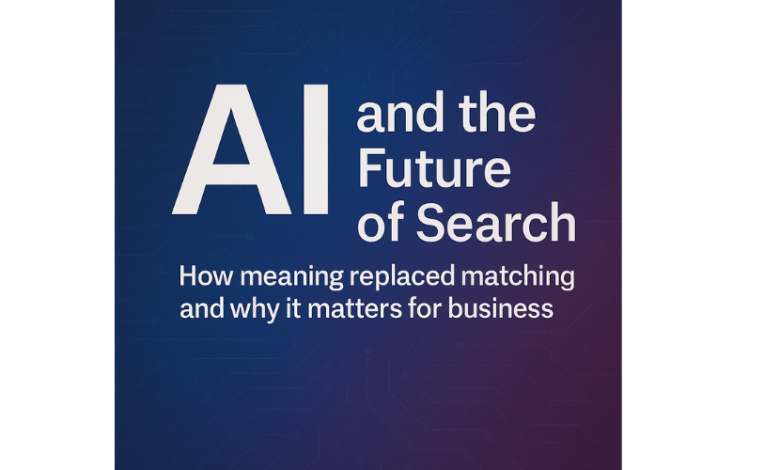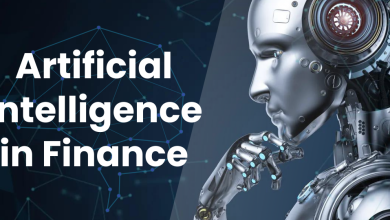
Summary
Search used to be about matching words. Now it’s about understanding meaning. The shift from keyword-based lookup to semantic, generative, and agentic systems is quietly transforming how companies find and act on information. This piece explores what that means for leaders designing the next wave of intelligent systems and how to keep them reliable, transparent, and human-centered.
When Search Stopped Counting Words
Two decades ago, search looked like a ritual. You typed things like “best seafood restaurant Boston” or “fix laptop battery not charging” and prayed to the Google gods. Search engines didn’t understand intent. They just counted words and hoped for the best.
Old-school search worked like an accountant. It tallied overlaps and ranked them by importance. TF-IDF, BM25, PageRank, all clever ways of saying, “Let’s count words and pretend it’s insight.” It worked fine until we started asking it to understand sarcasm or diagnose our Wi-Fi issues.
Today, we speak in full sentences and expect machines to get us. That small behavioral shift hides one of the biggest tech leaps of our time. Search has evolved from counting words to understanding meaning.
Semantic search rewrote the rules. Instead of matching words, it compares ideas. Ask for “cheap running shoes for bad knees,” and it finds “supportive athletic footwear.” Different words, same intent. It’s not reading your mind, but it’s close enough to feel spooky on a Monday morning.
This makes search feel human. It understands half-formed thoughts, slang, and typos. In fields like medicine or law, that’s not convenience. It’s survival. A misspelled protein name still finds the right paper. A lawyer still reaches the right precedent. Not bad for something that used to choke on punctuation.
Most organizations now mix the two worlds. Keyword search is fast. Semantic search is smart. Together, they make sure you find what you meant, not just what you typed.
When Search Learned to Write
Once search could understand meaning, the next question came naturally: what if it could answer too?
That idea became Retrieval-Augmented Generation, or RAG. Instead of just fetching results, RAG retrieves, reads, and writes. You ask a question. It hunts for relevant material, feeds it into a language model, and composes an answer. Think of it as an intern who actually checks sources before turning in the report.
Ask your company’s IT assistant, “How do I set up a VPN on a Mac?” and it doesn’t invent a response. It pulls from documentation and explains clearly. Useful, right up until someone asks it to troubleshoot a printer.
Still, RAG only reacts. It retrieves, summarizes, and stops. The next leap is agentic systems, AI that reasons, plans, and takes multiple steps on its own. Basically, an intern who got promoted.
The Rise of Agents
Think of the difference between a helpful intern and a fully capable colleague. A RAG system gives you an answer. An agent figures out what you meant to do next.
If a researcher asks, “Summarize the latest government incentives for hydrogen fuel production and list which companies might benefit,” a RAG system produces a tidy summary. An agentic system goes further. It pulls filings, checks trends, and builds a full analysis. It’s like working with someone who actually reads the email thread before replying.
Companies like NVIDIA and Meta, plus open-source teams, are testing this right now. Frameworks like TURA (Tool Using Retrieval Agent) let AI decide when to search, what to use, and which sources to trust. Powerful, but occasionally unhinged. Agents can loop, stall, or get stuck arguing with themselves. If you’ve ever seen a team brainstorm on Slack, you get the idea.
Accountability becomes tricky. If AI acts on your behalf, who verifies the process? Developers are building audit trails and confidence scores, but the rulebook’s still wet ink.
Where It’s Already Changing Work
This isn’t theoretical anymore. Inside companies, internal search has grown up. No more ten-tab treasure hunts through the company wiki while your coffee goes cold. Employees ask questions and get sourced answers. Engineers ask, “Has anyone solved this tolerance issue before?” and find archived designs. Legal teams surface similar cases in minutes instead of hours.
Customer support assistants now act like technicians, not chat scripts. A customer describes a problem, and the AI retrieves manuals, checks logs, and walks them through a fix. Resolution times drop. Agents don’t take lunch breaks.
E-commerce is deep in it too. Shoppers type “comfortable jacket for cold windy runs” or “lightweight carry-on for long flights.” Old search struggled. Semantic systems translate adjectives into product features. Some retailers even have agents checking live inventory and prices before answering. The result? Fewer frustrated shoppers yelling at the search bar.
Healthcare might be the most transformative case. Clinicians use RAG tools to query research in plain language. Agentic systems could go further by comparing treatments, flagging trial eligibility, and summarizing findings with citations. It’s not replacing expertise. It’s freeing experts from endless PDF archaeology.
Keeping the Systems Honest
Every new capability brings its own risks.
Hallucination is still a problem, which is a polite way of saying the model sometimes makes things up with the confidence of a first-year consultant. The fix is traceability. Each generated answer links back to its sources. Some systems now hide answers if the confidence score is too low. Honestly, some people should try that too.
Bias lingers as well. Embedding models inherit patterns from their training data. If you’re ranking candidates or assessing risk, you need bias monitoring baked in, not bolted on.
Performance and cost are another balancing act. These systems need serious computing muscle. Engineers juggle speed, accuracy, and expense with tricks like caching and quantization. It’s like deciding whether to buy a sports car or take the bus, knowing your data’s riding shotgun.
And then there’s privacy. Internal agents can access sensitive data, so guardrails matter. Policy-aware retrieval helps, checking what the AI is actually allowed to see before it searches. It’s the digital version of reminding your intern not to forward the confidential doc to the entire company.
Building Without Losing Control
Most organizations don’t need to start with agents. The smarter move is stepwise.
Start with semantic retrieval to improve relevance. Add RAG for clear, grounded answers. Experiment with agentic reasoning only where it adds real value.
A healthy workflow might look like this:
- Retrieve documents using both keyword and semantic similarity.
- Re-rank results with a domain-tuned model.
- Feed the best into a generator.
- Link every statement to its source.
- Add planning logic only when it earns its keep.
That keeps humans in control and avoids the black-box panic. The best systems build trust first, then scale. And preferably not the other way around.
What Comes Next
The line between searching and acting is fading fast. Google’s AI Overviews already summarize instead of listing links. Startups are building agents that browse, verify, and respond in full sentences. The web is quietly turning into an assistant with opinions.
Real-time search is the next big leap. A logistics agent might combine live tracking data with documentation to answer, “Which shipments are at risk of delay and why?” That’s not a concept. It’s a pilot project with budget meetings attached.
Next comes multimodal search. The same math that links words can connect images, sound, and video. Soon you’ll upload a photo of a broken part to find replacements instantly, or hum a melody to locate similar songs. Somewhere out there, a copyright lawyer just felt a chill.
Personalization will deepen too. As agents gain memory, they’ll learn your tone, context, and preferences. Search will feel less like interrogating the internet and more like collaborating with an assistant who actually knows how you think.
The Bigger Question
For decades, search engines were librarians. They pointed you to shelves but never told you what to believe. With generative and agentic systems, that’s changing. Search now interprets, summarizes, and decides what to highlight.
That’s useful and powerful. It saves time but also shapes perception. The real challenge isn’t technical. It’s ethical. Leaders have to set standards for transparency and validation before the systems set their own.
Search used to be about finding information. Now it’s about finding understanding. The algorithms aren’t just matching text anymore. They’re reasoning, contextualizing, and deciding what matters.
The challenge isn’t teaching machines to think like us. It’s making sure we don’t stop thinking for ourselves.




